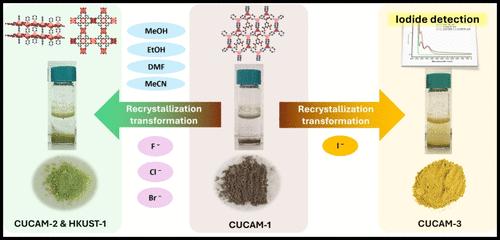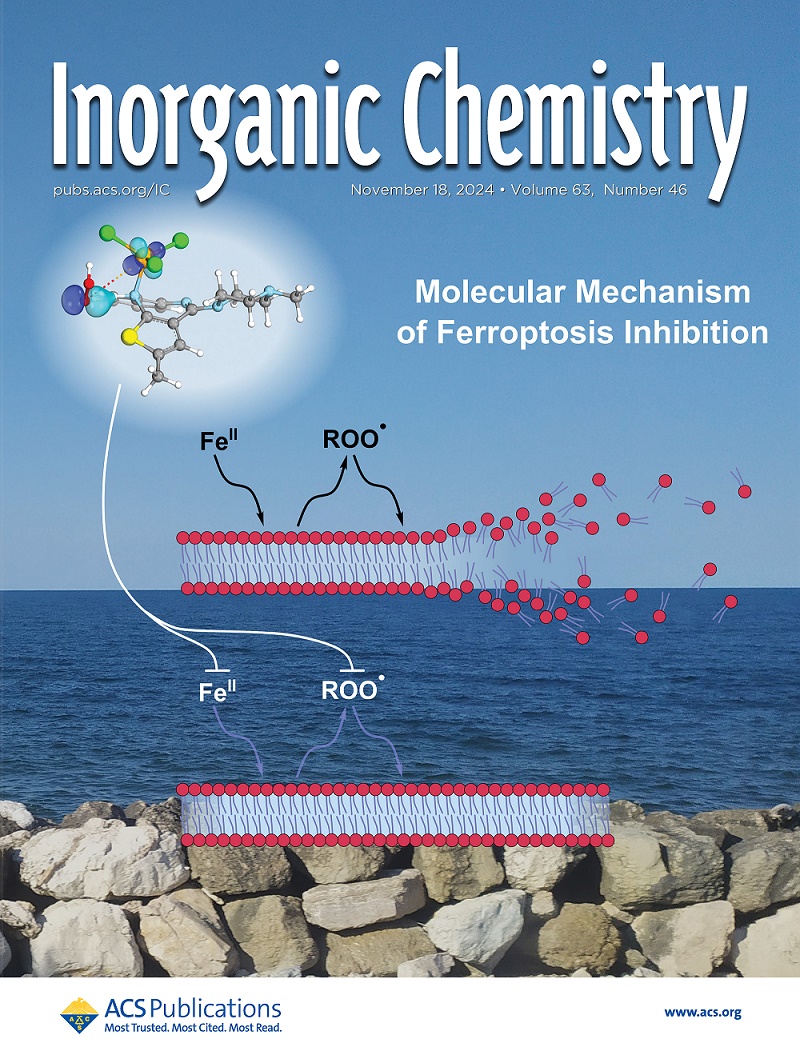Mechanistic Insights into Solvent-Mediated Halide-Specific Irreversible Transformation of Cu-MOF with Iodide Detection Capability
IF 4.3
2区 化学
Q1 CHEMISTRY, INORGANIC & NUCLEAR
引用次数: 0
Abstract
The fascinating feature of metal–organic frameworks is that they can respond to external stimuli, unlike other inorganic materials. This feature corresponds to the framework’s flexibility, which originates with the long-range crystalline order of the framework accompanied by cooperative structural transformability. We have synthesized a novel metal–organic framework comprised of Cu(I) nodes with pyrazine linkers and benzene-1,3,5-tricarboxylate acting as template anions, named CUCAM-1 [Cu(Py)2(BTC)]n. In the presence of polar solvent systems, CUCAM-1 undergoes an irreversible structural transformation to yield a mixed phase that consists of HKUST-1 [Cu3(BTC)2(H2O)3]n and another CUCAM-2 [Cu(Py)(BTC)]n MOFs, whose novel structure is successfully revealed by continuous rotation electron diffraction from the mixture. In this structural transformation, a new ligand exchange occurs where template anions become ligands, confirmed by single crystal X-ray analysis. Further, structural transformation and the mechanism are explained by ab initio molecular dynamics (AIMD) simulations. Interestingly, different halides (F–, Cl–, and Br–) can be accompanied to affect/control the composition of the second phase by favoring the formation of the HKUST-1 phase over CUCAM-2, which was evident by the powder X-ray diffraction studies. Furthermore, the structural transformation induced by I– resulted in a colorimetric response due to the formation of a new MOF CUCAM-3, paving the way for use as an iodide detector.

求助全文
约1分钟内获得全文
求助全文
来源期刊

Inorganic Chemistry
化学-无机化学与核化学
CiteScore
7.60
自引率
13.00%
发文量
1960
审稿时长
1.9 months
期刊介绍:
Inorganic Chemistry publishes fundamental studies in all phases of inorganic chemistry. Coverage includes experimental and theoretical reports on quantitative studies of structure and thermodynamics, kinetics, mechanisms of inorganic reactions, bioinorganic chemistry, and relevant aspects of organometallic chemistry, solid-state phenomena, and chemical bonding theory. Emphasis is placed on the synthesis, structure, thermodynamics, reactivity, spectroscopy, and bonding properties of significant new and known compounds.
 求助内容:
求助内容: 应助结果提醒方式:
应助结果提醒方式:


